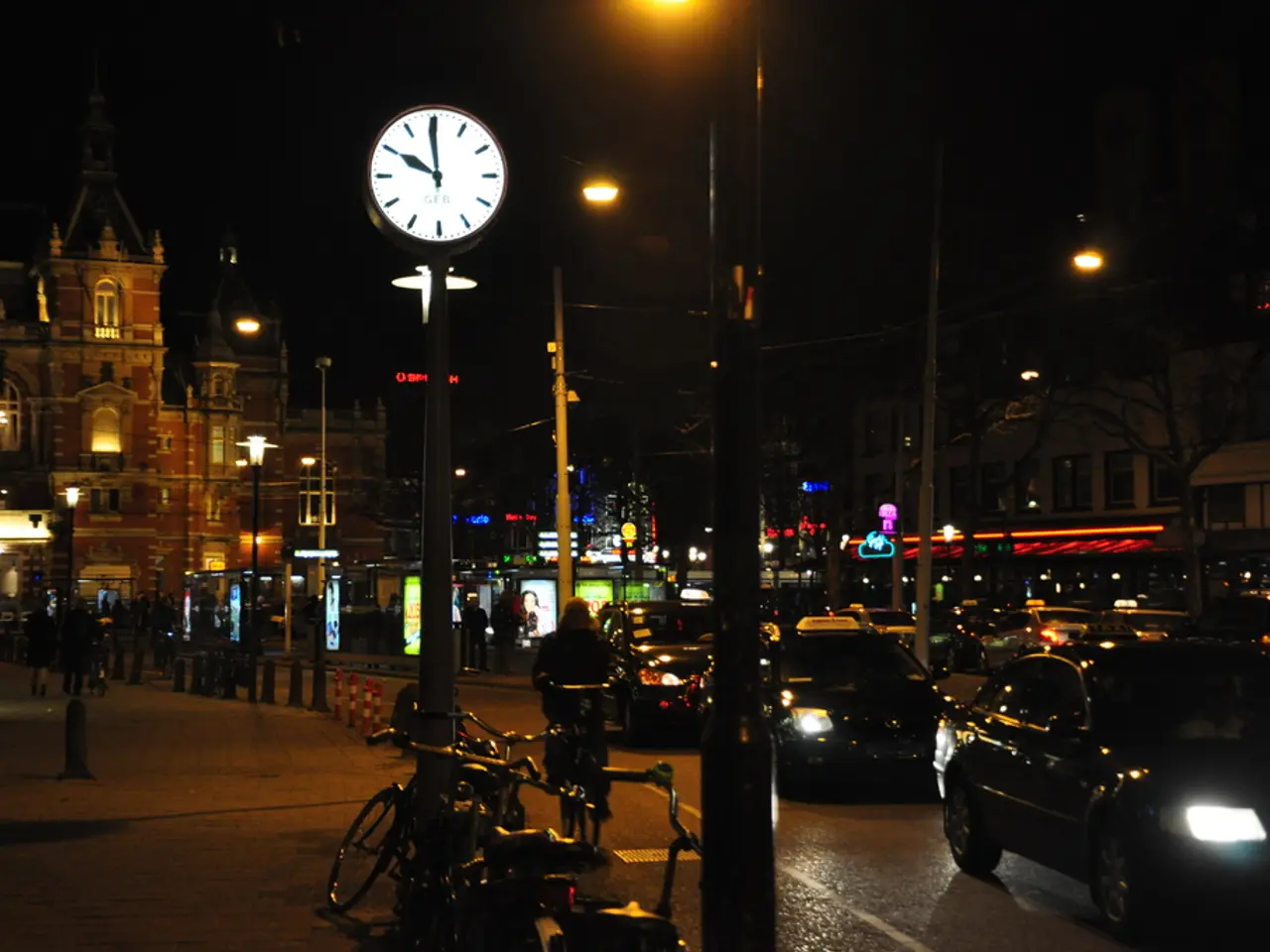Optimization Strategy for Navigating Walking Routes using OpenStreetMap Network Data
In the vibrant city of Tartu, Estonia, known for its cafes, bars, restaurants, cultural events, and green areas, an interesting analysis has been conducted to determine the walking distances from The Kissing Students monument to all cafes in the city.
Using the Python library OSMnx, the walking street network for Tartu was extracted. This open-source library is particularly useful for analyzing accessibility to services like cafes based on walking distances. The OSM data used in the algorithm is licensed under Open Data Commons Open Database License (ODbl) or attribution license.
The analysis begins by finding the exact location of The Kissing Students monument. While the exact coordinates are not readily available, the monument is located in Tartu’s Town Hall Square area, near the main University building and Café Wilde. The coordinates can be obtained using OSMnx or from a map service by searching "Kissing Students Fountain, Tartu".
Once the location is found, the nearest graph node in the OSM walking network for Tartu is identified. This forms the origin point for all the walking routes.
The next step involves retrieving the locations of all cafes in Tartu from OSM. The cafes in Tartu are concentrated in the first 1000m of walking, approximately a 20-minute walk, with most places in the city being reachable by walking.
The nearest graph nodes for each cafe are then found, and the Shortest Path algorithm, which is being used in Tartu's OSM walking network, is employed to calculate the walking distances from The Kissing Students node to every cafe node.
The result is a GeoDataFrame with 43 routes, each representing a path from The Kissing Students monument to a cafe in Tartu. The next map shows the intensity of distance in Tartu, with red indicating the longest walking routes.
This approach gives accurate walking distances on real routes in Tartu, providing valuable insights for both locals and visitors alike. If desired, one can also retrieve the actual paths and visualize them on the map using OSMnx plotting utilities.
With Tartu's walking network reviewed, one can navigate the city smoothly using city bikes, Bolt scooters, or walking, ensuring a comfortable city campus experience for international students and a delightful exploration for everyone else. Tartu, the cultural capital of Estonia, is indeed a walking city, with plenty of cafes within the closest 500m to 1000m from the city center.
[1] https://www.openstreetmap.org/node/3464633528 [2] https://wiki.openstreetmap.org/wiki/Tartu [5] https://osmnx.readthedocs.io/en/stable/tutorial.html#shortest-paths
- The analysis, focusing on the city of Tartu, extends beyond cafes to encompass other aspects of the city's lifestyle, such as home-and-garden, technology, and sports, which can also be studied using the OSMnx library due to its ability to analyze accessibility to various services.
- For those interested in sustainable living, adventure travel, or travel in general, having accurate walking distances to key locations in Tartu can enhance one's experience, making it easier to explore the city and its verdant green areas, cultural events, and architectural landmarks.
- In the realm of data-and-cloud-computing, the data obtained through this analysis, including the geographical coordinates and walking distances of cafes in Tartu, could potentially serve as a foundation for further studies or city planning initiatives, emphasizing the importance of open-source data and open licenses like the Open Data Commons Open Database License (ODbl) or attribution license.
- As Tartu is renowned for being a walking city, this analysis not only benefits locals but also international students who are new to the city, aiding them in navigating the city seamlessly on foot, by city bikes, or Bolt scooters, ultimately providing a pleasurable experience while embracing the vibrant city life of Tartu.





